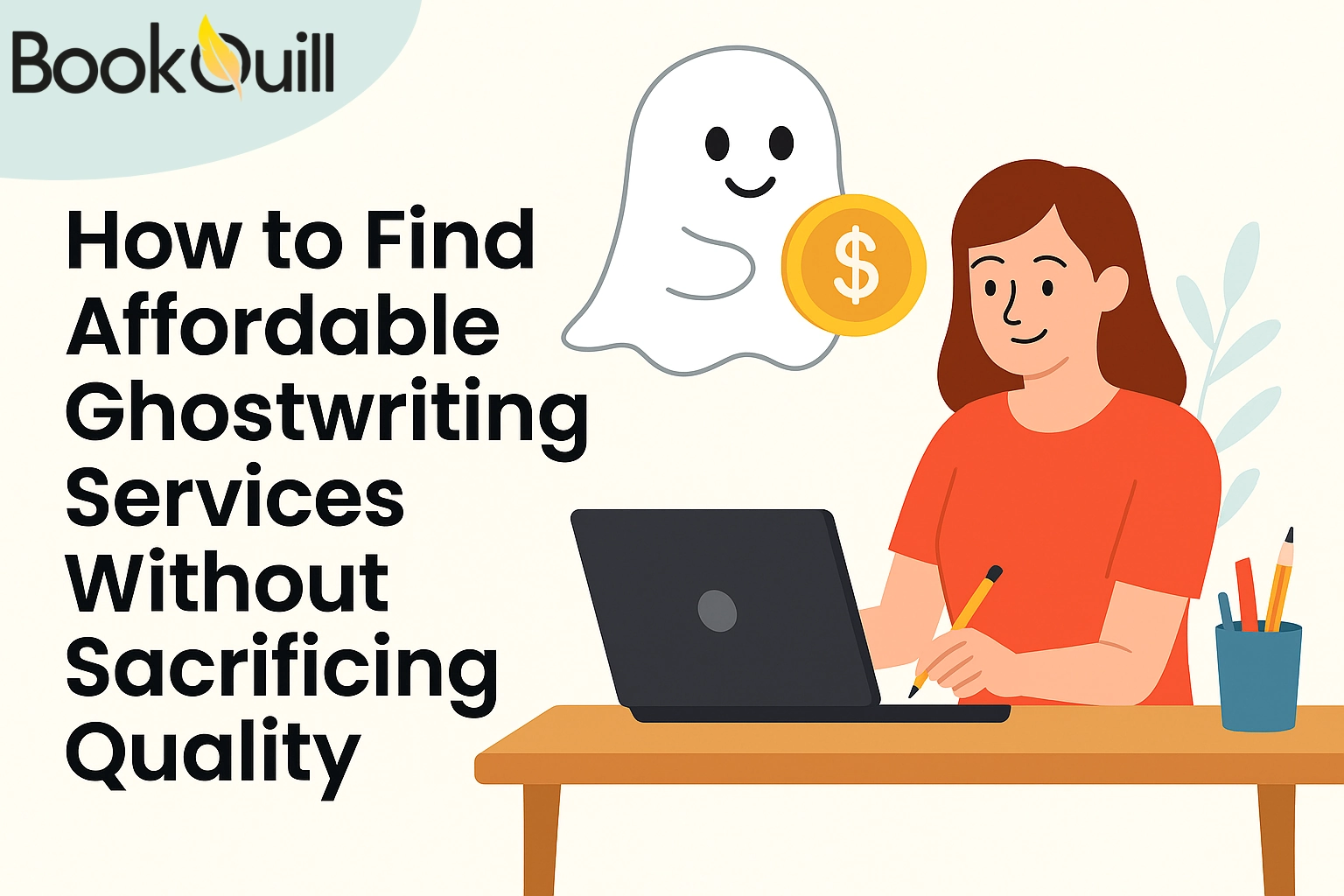Table of Contents
Explore Blogs
Trending on Ebook
Seven Tips for Writing Young Adult Novels

Young adult (YA) publishing is one of the fastest-growing areas in literature, attracting readers of all ages. Well-known books like Twilight, Shadow and Bone, The Mortal Instruments, and The Hunger Games are great examples of YA fiction and their broad appeal to the teenage experience.
Some may think it’s odd for adults to enjoy YA literature, but it’s actually a sign of the genre’s ability to connect with a wide range of readers.
However, writing young adult books or novels that are both entertaining and meaningful is challenging. The genre needs a careful mix of relatability, authenticity, and creativity. After reading many novels and refining our writing skills, we’ve gathered seven key tips to help you create a captivating YA story.
Key Takeaways
- YA books cater to readers aged 12–18 but attract adults as well, with 74% of YA readers being adults.
- YA protagonists should be relatable, typically within the same age group as readers (13–18 years).
- Write like a teen, not like an adult trying to be a teen.
- Focus on a real teenage point of view instead of seeing it through adult eyes.
- Use a relatable voice that sounds like how teens really talk and think.
- Talk about serious topics like mental health, identity, and relationships.
- Combine fun moments with serious themes to create a realistic story.
- Aim for hopeful endings that inspire optimism, even after tough situations.
- Create characters who have flaws and insecurities and who grow throughout the story.
- Use sensory details to make settings vivid and connect with characters’ emotions.
What is Meant by Young Adult Books?
A YA book bridges the gap between reading material for children and adults by catering to a youthful audience. Although young adult novels are promoted to readers between 12 and 18, research indicates that adults are equally like them.
Recent surveys show that 74% of YA readers are now adults, with 28% (of readers) being older than 28. However, publishers have estimated that between 55% of YA novels were bought by adults in recent years.
Some reports claim that YA is growing in popularity among adult readers because it counterbalances the demands of rising maturity in a generation that is delaying the transition to “adult” life. The young adult (YA) book market is still demonstrating remarkable growth in 2023 and 2024. In 2023, even when the print book market, as a whole, faced a bit of a decrease, YA fiction still did well. What’s cool is that the addition of modern YA books is the result of the cultural shift where kids are moving towards YA books from children’s and middle-grade books. The strength of the market in this area is in sharp contrast with other sections of the economy that are in decline. You can also use Premium Ghostwriting Services in US like BookQuill for help.
The trends in 2024 are expected to be quite favorable as the already high involvement with YA content will carry on, making it the best time to write a pen down a memorable piece!
Discover the Market Before You Begin
Stories we read as kids often stick with us, and it may be appealing to desire to recreate a more modern version of a tale that you remember fondly, or that has special importance for you. Even if you were only a teenager a few years ago, think about how the market has altered since then.
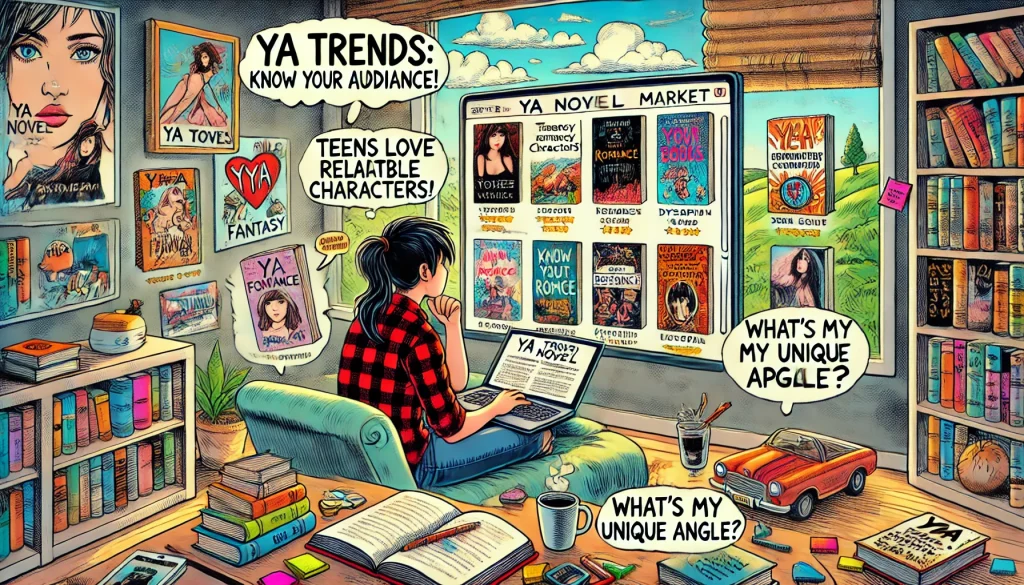
As the saying goes, “good readers are the best writers,” we would suggest reading widely, from recently published young adult novels to classics like John Green, Jenny Han, and Suzanne Collins. Examine the YA area of libraries and bookstores to see what is advertised on the shelves or tables. When writing your letter of inquiry, try to include contrasting titles, ideally ones released within the previous five years.
Top Tips for Writing Young Adult Books
1. Understand Reader’s Point of View (POV)
The idea is that determining the point of view (POV) involves more than just choosing between the first and second person. When thinking about time, it is important to consider the exact moment in which your narrator tells the story. For YA fiction, it gets a bit more complicated: you need to make your character’s point of view feel current, new, and real.

Don’t look at adolescence through an adult’s eyes; that view can feel very distant and old-fashioned. Instead, try to understand the thoughts and feelings of teenagers today. This can be tough because it means seeing things from a more youthful viewpoint that doesn’t always prioritize adult logic.
2. Keep the Age of Character as of Reader
Picking a character’s age for your story is one of the most crucial choices you can make to reach your target audience. Main characters in YA fiction tend to also be within the same age group as the potential reader. Teen readers tend to enjoy reading about characters of the same age. They may like older characters than themselves but never younger ones. For instance, middle-grade protagonists are usually in middle school, while young adult novels are centered around high school.
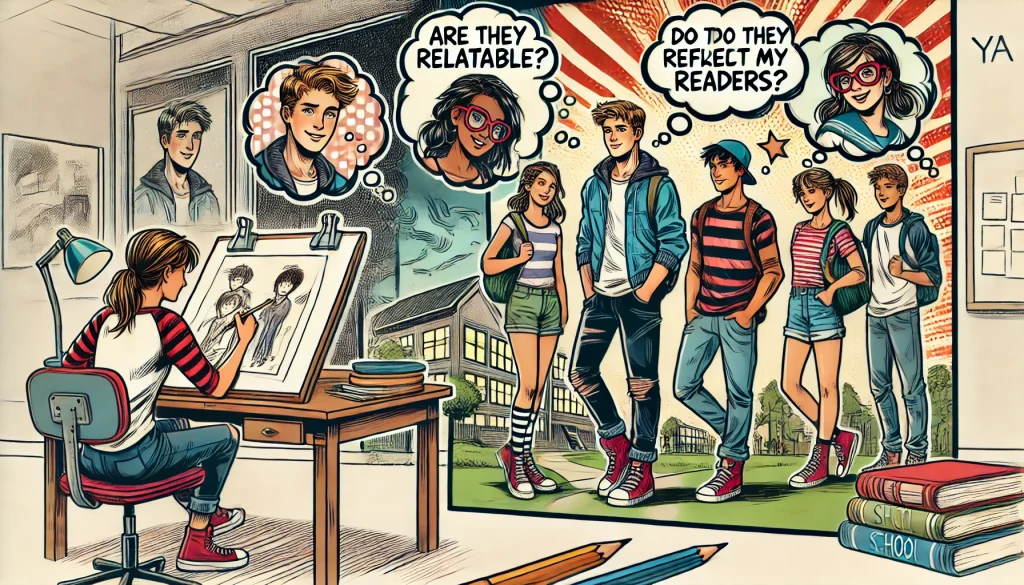
High schoolers read plenty of adult books, too, but your core YA readership is generally seventh to ninth-graders. YA novels are different in that the teenagers who are their main characters are not growing and changing over time with a reflective adult view. Instead of adult novels with teenage characters that simply contain the happenings of adolescence, they are undergoing growth and transformation in real time.
3. Use simple Voice and Tone to add Genuine Emotions
Writing in an authentic voice and realistic tone is key to language mastery and engagement in young adult fiction. The tone, grammatical structure, and vocabulary of middle-grade novels may be easier than those of young adult fiction, but they should never be read as complicated. If your story is meant for a teenage readership, don’t get stressed about the complications of the vocabulary in the first draft.

Start by finding a voice that feels natural to you, and the right words will come out naturally. This voice should be real and relatable. If you feel like a word or sentence doesn’t fit, that means your voice still needs work. Also, keep in mind that teens can handle tough and complicated topics, so it’s not always about making things easier.
4. Don’t be Afraid of Touchy Subjects
Young adult literature opens up a lot of possibilities, even when it comes to difficult or controversial topics. Contemporary YA novels can cover just about any topic, from mental illness to abuse to intimacy. However, middle school is often still vague about obvious issues like sex or drug use. For YA, exploring serious topics does not require suppression.

However, it’s not about picking an interesting topic and building a story around it. Special attention should always be paid to the person and their unique voice so that the story feels authentic and heartfelt. Once you have a relatable protagonist, the story can address these important issues organically.
5. Avoid Hurting the IQ Level of Readers
The biggest mistake writers make when crafting young adult fiction is sounding preachy. As the saying goes, “If you want to send a message, call Western Union.” Teens don’t want to be lectured or taught a lesson when they read a novel. Fiction invites readers to think and question; it doesn’t offer ready-made answers or solutions.
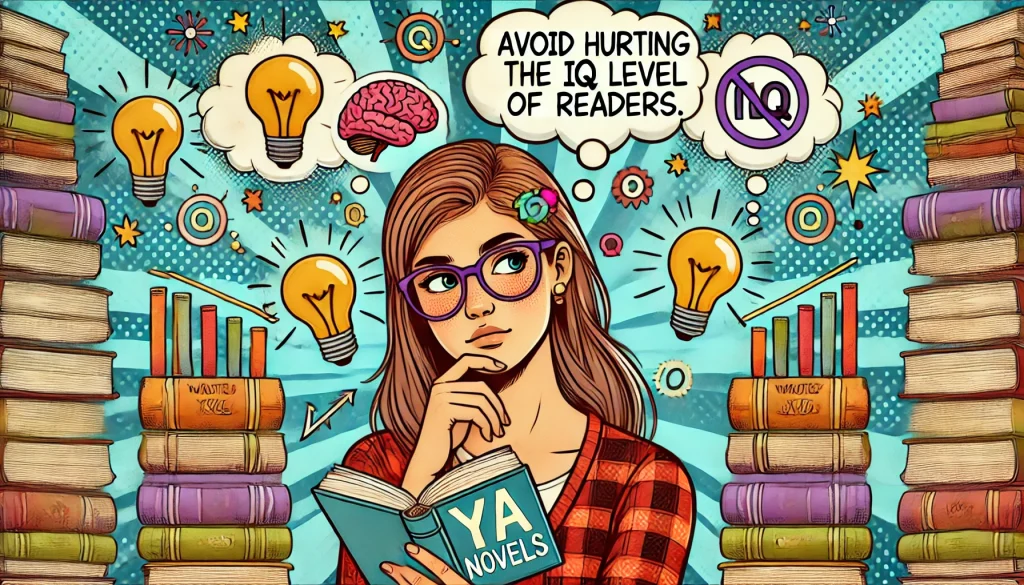
As a writer, you have the opportunity to add your values to your work, but it’s important to remember that the primary goal of writing is storytelling, not preaching. Teen readers are particularly astute and can easily sense anything that feels forced or inauthentic. It’s essential to trust your audience to engage with the narrative and come to their own conclusions. Focus on crafting a compelling story that resonates, and let the themes emerge naturally.
6. Balance Humor and Seriousness in The Book
Another thing about writing for young adults is the capacity to intertwine humor and serious matters. Most teens use their wit and comical lines as a defense mechanism to the issues around them. Even in all the adult books near me, humor can be found, and how it adds light-hearted moments to the story makes it feel so realistic. Balance, however, is key here. If one gets too carried away with humor, the drama will seem lacking in important moments. Conversely, if the writer does this in excess, it’s going to feel overwhelming to the readers.

Humor should add life to characters without taking away from the story’s emotional depth. It captures moments in personalities or interactions that can evoke laughter, provided it serves the plot and doesn’t interfere with it. This blend of humor and emotion draws readers into the narrative, making the emotional rollercoaster experienced by the teenager more relatable.
7. Make the Ending Happy and Hopeful
When writing books for young adults, it’s critical to consider the impact of your tale’s ending. While adult novels often leave readers with open or bleak conclusions, young adult (YA) novels usually convey a sense of hope. Even when tackling serious topics or difficult realities, providing a hint of possibility can make a significant difference.
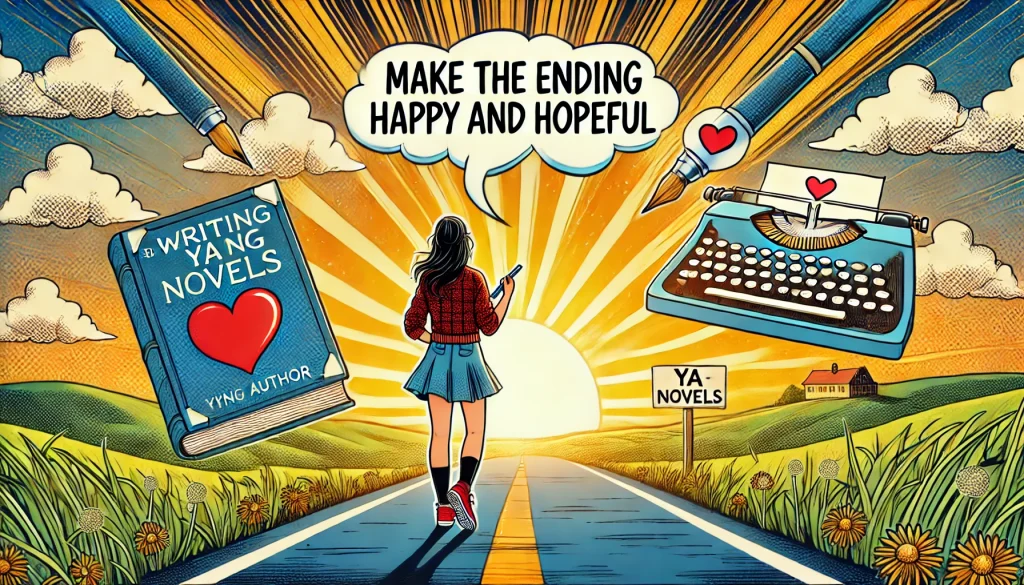
This doesn’t mean you should downplay important issues. Instead, there should be a sense of empowerment and optimism. Readers should feel that there is a chance for change and that the characters can shape their own futures. In YA fiction, endings that allow for hope are especially impactful and tend to stick with readers.
Additional Things to Remember for Writing Authentic Young Adult Book
-
Create Real Characters with Flaws
Young adult readers will crave characters that seem more real, and to this end, complexity and flaws should not be avoided. It is about making your protagonists beyond their strengths or heroic qualities; they should possess weaknesses, insecurities, and frail moments.
Teens go through a stage of discovering who they are, most likely making impulsive decisions and trying to figure out where they fit in life; your characters should exhibit all these.
Give them inner conflict, moral dilemmas, and misunderstandings that set them on the course that their actions will take. All of these layers contribute to a more relatable and engaging character. Provide development through the story; just because it is imperfect and round does not mean perfection was attained. A poorly flawed character can capture an audience’s hearts and make room for your readers to see their reflection in your story, creating an experience that makes the book truly special.
-
Add Dialogue for Authentic Speech
It’s in the dialogue that young adult fiction really gets its powerful emotional impact. But only if it rings true for a teenager. Teens speak differently, with their slang and sarcasm and incomplete sentences. But making the teenage dialogue credible doesn’t mean loading their conversation full of trendy expressions that immediately date.
Rather, what’s needed is a kind of capturing the rhythm and tone of teenage speech that can be fast-paced, emotional, and fragmented. Pay attention to how teens communicate in real life, and weave that authenticity into your writing.
Do not over-explain; they often speak in shorthand or rely on nonverbal cues. Also, remember that each character should have a distinct voice that reflects his or her background, interests, and personality. Good dialogue can bring your characters to life and draw readers into their world.
-
Setting and Characters Should Feel Alive
The setting in young adult fiction should feel alive and influential, like your characters. Whether it’s a high school hallway buzzing with drama or a small town that feels like a cage, the environment can have a lot to do with shaping the story and experiences of the characters. Describe the setting using sensory details that teens would notice about the emotions of your protagonist. If your character feels trapped, describe the setting that emphasizes that feeling.
For example, he or she might feel as though the air is too heavy or the walls seem to close in. The setting can also be a factor in conflicts and themes of the story, affecting the plot meaningfully. By regarding the setting as more than something behind which your characters walk around, you enrich your narrative and give readers a more immersive experience. This makes them feel like they are part of this world you have created.
-
Keep the Story at the Right Pace with Teen Energy
Pacing is also a need for young adult fiction as teenagers have hardly any patience to sit and read on a slow, dragged story. Your story has to have a hook to catch it immediately and then have a plot that runs continuously at a dynamic rhythm.
Extremely lengthy descriptions or lengthy expositions should be avoided since they will likely bore the reader. Instead, the action, dialogue, and development of the characters are presented at a pace that is felt as fast but meaningful.
To give readers time to catch their breath and consider what is happening, mix your powerful moments with short pauses. Imagine your story as a rollercoaster ride, full of emotional ups and downs but not too many twists so the readers are hooked. A good-paced story mirrors the energy and urgency of teenage life and captures the essence of their experiences and emotions while holding them glued to the pages.
What Qualities Does Young Adult Fiction Have?
YA fiction is a literary genre that falls somewhere between adult-oriented novels and middle-grade fiction, which is usually aimed at middle school students. Among its characteristics are:
I. Narratives are told from the viewpoints of youth.
Young adult fiction is typically written from a first-person perspective, often focusing on the experiences of a teenager. This perspective is popular among teenagers, who enjoy reading about other teenagers.
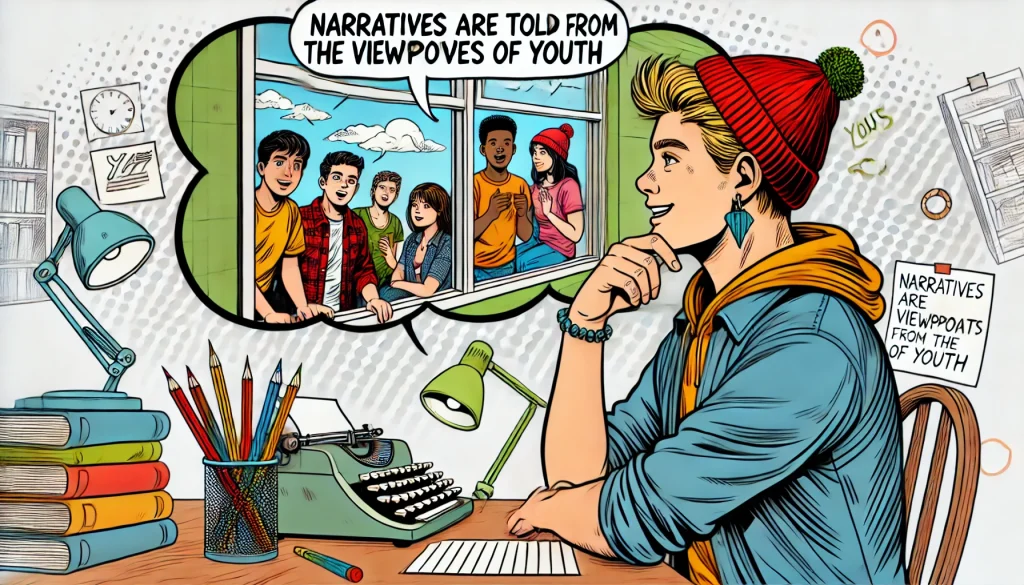
Even if the story doesn’t directly center on a YA, it is often told from a youngster’s perspective, making it easier for young adults to relate. For instance, To Kill a Mockingbird, a story about Atticus and Tom Robinson’s court trial, is told from a Scout’s perspective, making it relatable to young adults.
II. Young adult fiction frequently eliminates all adult characters.
In many stories, young adults are often the center of attention and receive credit for their accomplishments. Adults are often missing or playing a minor role, as seen in Lord of the Flies.
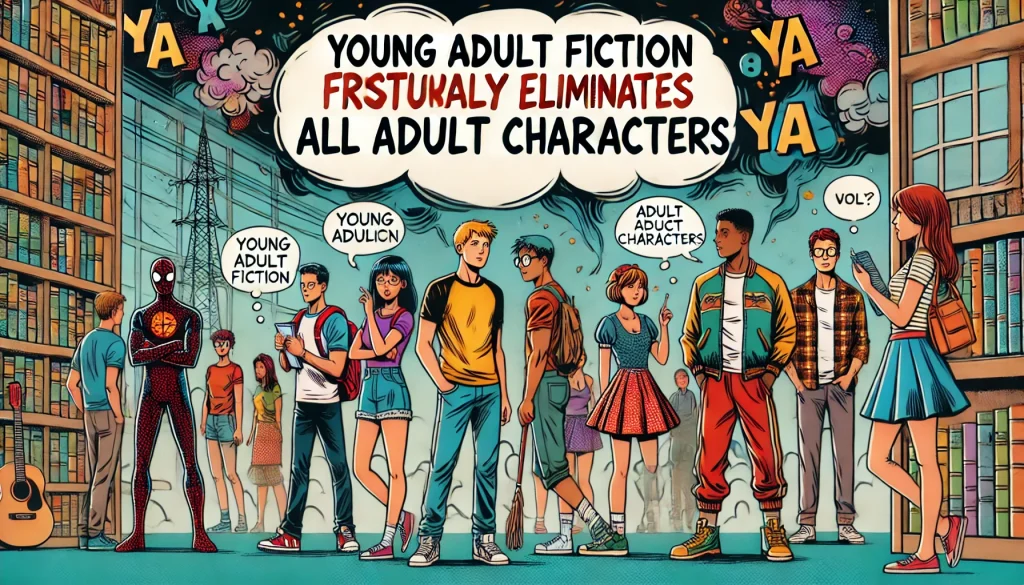
If an adult does appear, they are rarely a parent of a character, but rather a mentor figure that the teen seeks out and approaches on their terms. This allows the YA to shine in the story and receive credit for their work.
III. Young adult fiction moves quickly.
Many teens struggle with reading, but young adult fiction is quick to read and develop, often featuring limited characters and narrative events.
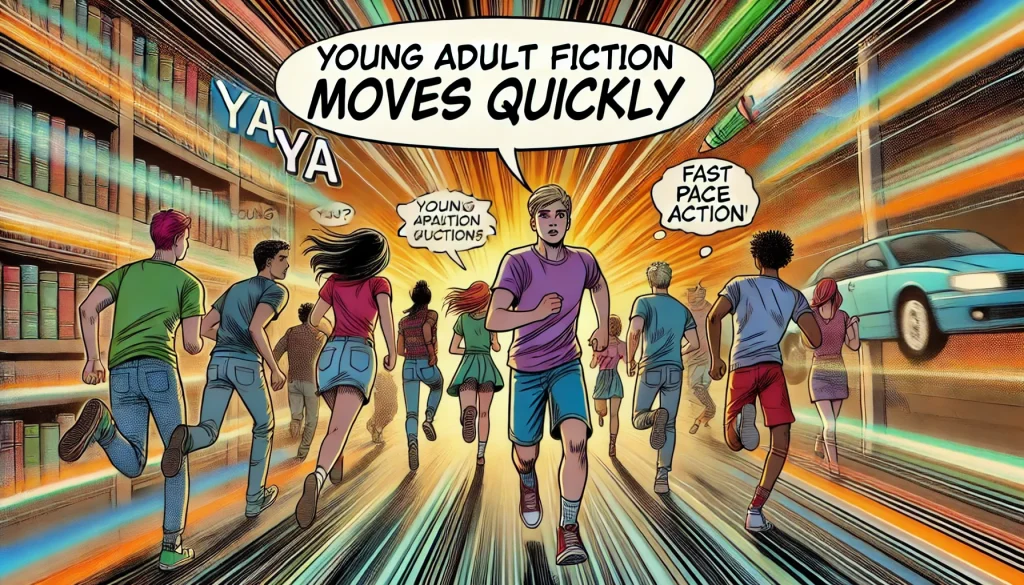
The language flows naturally and changes with current times, with popularity in speech and trends playing a significant role in the genre’s development. The Harry Potter series was a groundbreaking work in this area.
IV. Characters in young adult novels achieve admirable feats and are often upbeat.
Teenage protagonists who seem to know more than adults are appealing to teens due to their ability to succeed on their own terms and in their own way.
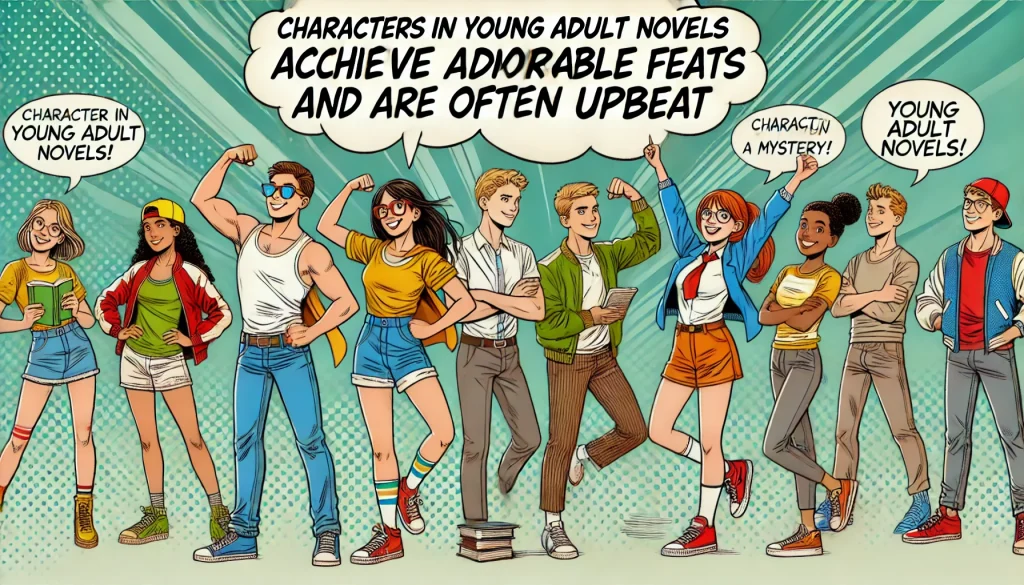
Change and growth are common themes in young adult literature, with protagonists losing innocence as they transition from childhood to adulthood. This maturation can affect them for life, and the need to learn, grow, and overcome appeals to teens of all ages. All works in this genre explore this theme.
V. Novels for young adults deal with genuine emotions.
Teens are interested in emotions and seek accurate representation in fiction. Books often depict emotional struggles like acquiring mature social skills, achieving independence, developing personal ideology, and achieving a masculine or feminine role.
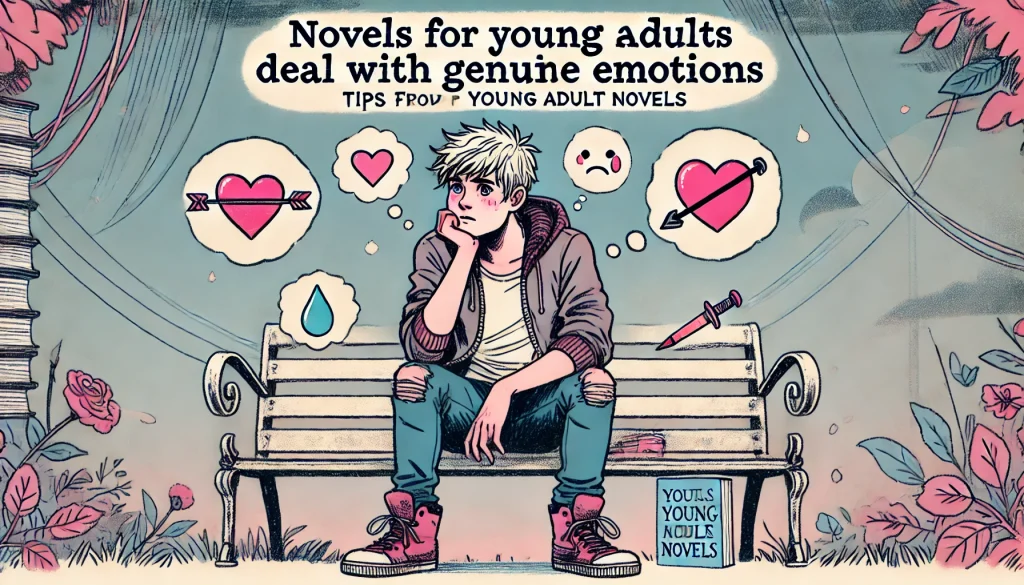
By following the development of these feelings in a fictional character, teens can work out their own angst and emotional struggles.
Popular Young Adult Novel Genres That You Must Explore
YA fiction can be written in nearly any genre to produce a captivating adult book. These are the same qualities that distinguish all great novels. A gripping narrative, compelling viewpoint, emotional honesty, a likable protagonist, interesting supporting characters, a story worth investing in, and a flawless use of language also elevate YA writing.
Teenage readers are usually sensitive to a certain level of edginess; therefore, horror and thrillers are quite acceptable in the YA genre. Among the particular YA subgenres are the following:
Action and Adventure
These stories, which are plot-driven and fast-paced, typically include a protagonist who embarks on a mission or journey and encounters harsh circumstances. They are usually quite tense and dangerous.
Examples
- Endgame by Malorie Blackman
- A Clash of Steel: A Treasure Island Remix by C. B. Lee
The Classics
Classic books are books that have made a name for themselves as timeless works of literature. There are “classic” and “modern” classics because classics are revered for their timeless value.
Examples
- The Handmaid’s Tale by Margaret Atwood
- I Know Why the Caged Bird Sings by Maya Angelou
Relationships, Family, and Life
This genre is typically set in the identifiable present with characters, events, and language. The conflicts and topics are usually relatable. The characters occasionally take on significant problems. Relationship difficulties, bullying, coping with life, emotional and mental health, or identity issues might all be part of this.
Examples
- Crush by Svetlana Chmakova
- History Is All You Left Me by Adam Silvera
Science fiction (Sci-fi) and Fantasy
Magic, the paranormal, or the supernatural are common themes in the fantasy genre’s fictional settings, events, and characters. Real or realistic-feeling science is a feature of the sci-fi genre. It covers space or time travel, life on other planets, the future of humanity, and futuristic environmental changes.
Examples
- Vanessa Len’s Only a Monster
- Beth Revis, Across the Universe
Horror
The purpose of stories of this genre is to frighten the reader. They provide an environment that evokes fear. Horrific descriptions like blood and wounds or more supernatural aspects like ghosts, devils, or spooky settings can be found in stories.
Examples
- House of Hollow by Krystal Sutherland
- Anna Dressed in Blood by Kendare Blake
Historical
This genre features stories and people that are placed against a significant historical or geographic backdrop. Social history, conflict, and political instability are often highlighted.
Examples
- Elizabeth Wein’s Code Name Verity
- From Ruta Sepetys’s Salt to the Sea
Mystery and Suspense
A mystery or secret that has to be found is frequently at the heart of the mystery genre. In most cases, the characters are enthusiasts. Thrillers tend to appeal more to young adults. With higher stakes, they are a little rough. Twists, treachery, and time constraints are common in stories.
Examples
- Bad Things Happen Here by Rebecca Barrow
- A Good Girl’s Guide to Murder by Holly Jackson
Humor
There are stories in humor that make you laugh or grin because of how strange the characters or narratives are. Any other genre can incorporate humor.
Examples
- How It All Blew Up by Arvin Ahmadi
- Charming as a Verb by Ben Philippe
Wrap Up
Writing young adult novels comes down to good stories, strong plots, relatable characters, and conflicts. It is important to write stories that capture the dramatic feelings, thrilling adventures, and complex experiences that characterize being a teenager.
The key is to subtly convey what is right and wrong without preaching. It’s important to offer glimmers of hope and the possibility that everything will ultimately be alright. Young adult (YA) novels resonate with readers by emphasizing that power and choice truly lie within them—they are loved, valued, and relatable.
Despite often addressing heavy issues, each YA narrative should carry a core message of hope. Even in the darkest moments, there is an underlying belief that things can improve and that teens hold the power to shape their own futures. This combination of realism, emotional complexity, and hope is what will make your book popular and appealing.
FAQs
Now that we have covered tips for writing a book let’s take a look at some common questions related to promoting or marketing a young adult book.
What are some effective marketing strategies for YA novels?
The book marketing services suggest using the power of social media campaigns on platforms like Instagram, TikTok, and YouTube. Partnering with book influencers, hosting giveaways, and creating interactive content are also effective.
How important are book covers for YA novels?
Extremely important. Eye-catching covers that match your YA genre can influence a reader’s decision to pick up the book.
How can YA authors effectively use ARCs (Advanced Reader Copies)?
Professional book promotion companies also suggest distributing ARCs to book bloggers, influencers, and early readers. This is to generate pre-release buzz on Instagram and TikTok. Positive reviews and online chatter can increase your novel’s visibility before its launch.
Is it necessary for YA authors to have a personal website?
Not just YA authors; every author should have a personal website. These websites act as a central hub for sharing information about the book, upcoming events, and bonus content. This way, your readers will stay engaged and connected.
About Our Author
Hi My name is Micheal Adams, When I am not watching horror movies and helping my kids with homework or reading my favorite fantasy/supernatural novels – I’m writing to guide aspiring authors. I focus on exploring and simplifying both the technical aspects and the often-overlooked details of book writing and publishing so I can empower new writers to climb the Amazon bestseller list and connect with more readers.



